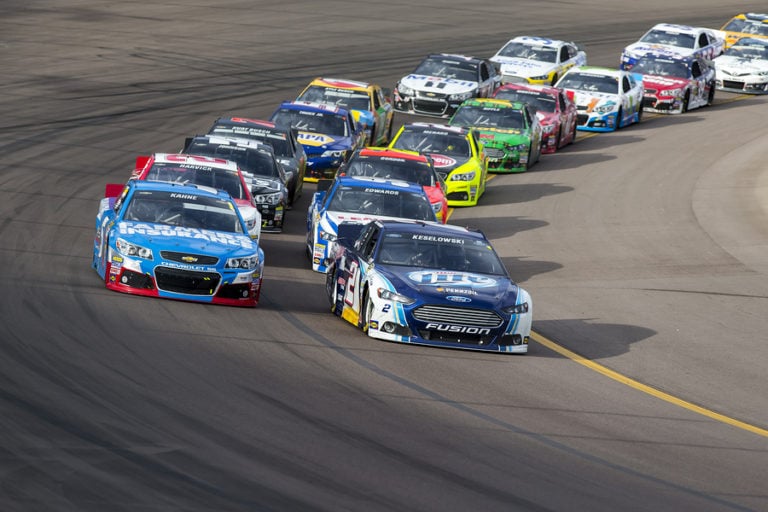What Does a NASCAR Nurse Do?

The racing industry has been under scrutiny for many years, as race fans and safety experts continue to debate about the racing rules and regulations that maintain the excitement at the track while keeping drivers safe. The 2001 death of Dale Earnhardt, a racing legend, devastated the racing community and ignited a national debate over the safety of the sport. Many fans and safety experts felt stronger safety measures on the track could have prevented his death. Earnhardt died after another driver bumped his left rear fender and sent him into a wall in the last lap of the Daytona 500. This racing tactic is called "bump drafting". Bump drafting allows drivers to pick up speed by reducing drag and receiving a bump forward from other drivers. For years leading up to Earnhardt's accident, this risky maneuver had caused many wrecks on the racetrack, and it ultimately became illegal after Earnhardt's 2001 death.
The ban on bump drafting was not the only change in racing after Earnhardt's sudden death. NASCAR established a safety research and development center to come up with new safety innovations to protect its drivers and viewers. Today, NASCAR continues to research ways to enhance its life-saving innovations since Earnhardt's death, including protective seats, better belt systems, window nets, head restraints, SAFER barriers, and more. NASCAR has also added new safety and medical personnel to racetracks and speedways across the country as part of the industry's continued commitment to safety initiatives designed to protect its drivers and spectators. Improved safety regulations and on-track medical personnel have created a new and safer racing industry made for high-speed and injury-free races.
This is where NASCAR nurses come into play! As part of NASCAR's 2001 post-season safety overhaul, NASCAR hired several full-time medical positions, including a safety analyst and medical liaisons, all of whom play a vital role in the continued safety of NASCAR's drivers and support team.
The medical liaisons work with NASCAR's three national series to collect and maintain detailed medical histories of the drivers at each race. A medical liaison coordinator is a registered nurse. They also coordinate medical services with the racetrack, drivers, crew members, and local hospitals. Medical liaisons ensure an incident-free race day and build a bridge between all racing parties for effective and efficient communication in case of an emergency.
NASCAR has also added safety and medical personnel to racetracks and speedways across the country, including the nursing professionals who serve as vital members of the medical team on race day. NASCAR nurses staff the infield hospital and treat drivers, crew members, officials, and spectators for major and minor medical emergencies such as sutures, foreign body removal from the eye, or full-blown traumas. These nursing professionals must sometimes deal with fast-paced, intense medical situations, especially after a wreck, so they have to be prepared for these situations. Nursing professionals should have training and experience in the emergency room, intensive care, cardiac, or trauma before beginning a career in the racing industry. Flight nursing would also be a beneficial experience to have.
RELATED: Travel Nursing Careers
How to Become a NASCAR Nurse
If you're interested in a fast-paced, intense, adrenaline-rushing experience as a nurse, NASCAR nursing might be for you, but just how does one get hired by the most recognizable name in racing? Below are a few tips that might help you get your foot in the door:
- Get your nursing degree: If you haven’t done so already, start by earning a Bachelor of Science in Nursing (BSN) from an accredited nursing program. This is typically a four-year degree program that provides you with the necessary knowledge and skills to become a registered nurse (RN).
- Gain experience: After completing your nursing degree, gain some experience working as a registered nurse in a healthcare setting. This could be in a hospital, clinic, or other healthcare facility. Building your skills and expertise in patient care will be valuable when working in the fast-paced environment of NASCAR.
- Obtain additional certifications: Consider obtaining certifications that may be relevant to the field of motorsports medicine, such as Advanced Cardiovascular Life Support (ACLS), Pediatric Advanced Life Support (PALS), or Trauma Nursing Core Course (TNCC). These certifications can enhance your qualifications and prepare you for the unique challenges of providing medical care at NASCAR events.
- Networking: Connect with professionals in the field of motorsports medicine, including NASCAR medical staff, nurses, and physicians. Attend conferences, workshops, and events related to motorsports medicine to network and learn more about opportunities in the field.
- Apply for positions with NASCAR or racing teams: Keep an eye out for job openings for nurses within NASCAR organizations or with racing teams. These positions may include roles such as trackside medical staff, team nurses, or travel nurses for racing events.
Interesting NASCAR Nursing Reads:
